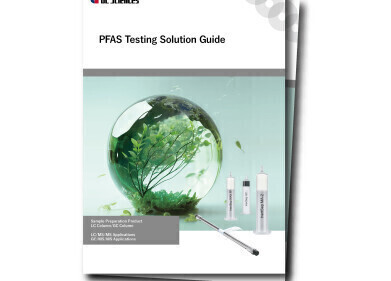-
-with-C-IC-and-logo_small.jpg) Furnace combustion tube with ceramic insert
Furnace combustion tube with ceramic insert
PFAS Analysis
Rapid, reliable and easy PFAS analysis
Mar 30 2022
The analyses of polyfluoroalkyl substances, or PFAS, is one of the hottest topics in the current environmental analysis sector; analysing PFAS concentrations are necessary to gain a higher level of understanding about the effects of PFAS components on human health and the environment.
Conventional PFAS analytical methods concentrate on the speciation of individual PFAS components by using costly separation methods. There are thousands of PFAS components that have been produced and pinpointed for monitoring, therefore the analyses for these components have become evermore complicated. Understandably, there is a growing demand for a standardised, rapid and reliable PFAS screening method to optimise sample throughput and reduce resources. TE Instruments’ solution for PFAS monitoring is their Xprep C-IC, which was created to evaluate the total amount of PFAS components in aqueous matrices at ultra-low trace levels.
The determination of AOF (Adsorbable Organic Fluorines) works on the same principle as AOX (Adsorbable Organic Halogens) analyses, which is a widely accepted and standardised technique that has been used for decades in environmental laboratories for the quantification of organic halides (Chlorine/Bromine/Iodine) in aqueous matrices. This technique involves a sample being combusted, conditioned and quantified by means of coulometric titration. For the analyses of AOF the quantification step is performed by using an Ion Chromatograph (IC).
TE Instruments have developed a fully automated, highly compact sample preparation system for oxidative pyrohydrolytic combustion, fraction collection, and sample injection towards the IC. The Xprep C-IC can introduce samples through both optimised direct injection (liquids module) and conventional boat-inlet (boat module) into a horizontal furnace. This automated sample-prep solution eases the complexity of sample transfer and improves ease-of-use considerably.
The Xprep C-IC offers a unique, optional usage of a ceramic insert in the furnace combustion tube. While conventional AOX analysis targets standard halides, the analysis of PFAS is aimed mainly at the analysis of elemental fluoride. This is where the power of the ceramic insert becomes apparent. Normally, fluoride attacks quartz glass and may thus make the combustion tube defective over time. When opting to use the ceramic insert, a protective layer protects the furnace tube quartz material which results in a considerably longer lifetime compared to a standard quartz glass set-up.
Digital Edition
IET 34.2 March 2024
April 2024
Gas Detection - Biogas batch fermentation system for laboratory use with automatic gas analysis in real time Water/Wastewater - Upcycling sensors for sustainable nature management - Prist...
View all digital editions
Events
Apr 22 2024 Hannover, Germany
Apr 22 2024 Marrakech, Morroco
Apr 23 2024 Kuala Lumpur, Malaysia
Apr 23 2024 Kintex, South Korea
Apr 23 2024 Edmonton, AB, Canada


















